A Review of the Use of Natural Fibers in Cement Composites: Concepts, Applications and Brazilian History
Abstract
1. Introduction
2. What Are Natural Fibers?
2.1. Lignocellulosic Fibers
2.2. Biological Structure of Fiber
3. Properties and Importance of Use in Cementitious Materials
3.1. Compatibility between Fibers and Matrices
3.2. Comparison of the Characteristics of Conventional Cement with Lignocellulosic Fiber Composites
3.2.1. Sugarcane Bagasse
3.2.2. Coconut
3.2.3. Sisal
3.2.4. Curaua
3.2.5. Pineapple
3.2.6. Jute
3.2.7. Piassava
3.2.8. Açai
4. Why Are Natural Fibers Treated for Application in Cementitious Matrices?
4.1. Chemical Treatments
4.2. Physical Treatments
4.3. Other Treatments
5. Effect of Fibers
6. Conclusions and Future Perspectives
Author Contributions
Funding
Data Availability Statement
Acknowledgments
Conflicts of Interest
References
- Achour, A.; Ghomari, F.; Belayachi, N. Properties of Cementitious Mortars Reinforced with Natural Fibers. J. Adhes. Sci. Technol. 2017, 31, 1938–1962. [Google Scholar] [CrossRef]
- Ferreira, T.R.M.; Dias, F.; Da Silva, A.B. Mechanical Properties Evaluation of Glass Fiber and Hollow Glass Bubble Reinforced Polyamide 6 Composites. In Proceedings of the 22nd CBECIMat, Natal, Brasil, 6–10 November 2016; pp. 6–10. [Google Scholar]
- Fokam, C.B.; Toumi, E.; Kenmeugne, B.; Meva’a, L.; Mansouri, K. Cement Mortar Reinforced with Palm Nuts Naturals Fibers: Study of the Mechanical Properties. Rev. Compos. Matériaux Av. 2020, 30, 9–13. [Google Scholar] [CrossRef]
- Zhang, P.; Yang, Y.; Wang, J.; Jiao, M.; Ling, Y. Fracture Models and Effect of Fibers on Fracture Properties of Cementitious Composites—A Review. Materials 2020, 13, 5495. [Google Scholar] [CrossRef] [PubMed]
- Chafei, S.; Gomina, M.; Khadroui, F.; Boutouil, M. Dependence of the Properties of Cementitious Composites on the Nature of the Hydraulic Binder Coating the Reinforcing Flax Fibers. J. Mech. Civ. Eng. 2017, 4, 27–33. [Google Scholar]
- Wei, J.; Gencturk, B. Degradation of Natural Fiber in Cement Composites Containing Diatomaceous Earth. J. Mater. Civ. Eng. 2018, 30, 04018282. [Google Scholar] [CrossRef]
- Aamr-Daya, E.; Langlet, T.; Benazzouk, A.; Quéneudec, M. Feasibility Study of Lightweight Cement Composite Containing Flax By-Product Particles: Physico-Mechanical Properties. Cem. Concr. Compos. 2008, 30, 957–963. [Google Scholar] [CrossRef]
- Hasan, K.M.F.; Horváth, P.G.; Alpár, T. Development of Lignocellulosic Fiber Reinforced Cement Composite Panels Using Semi-Dry Technology. Cellulose 2021, 28, 3631–3645. [Google Scholar] [CrossRef]
- Ardanuy, M.; Claramunt, J.; Toledo Filho, R.D. Cellulosic Fiber Reinforced Cement-Based Composites: A Review of Recent Research. Constr. Build. Mater. 2015, 79, 115–128. [Google Scholar] [CrossRef]
- Zulfiati, R.; Saloma; Idris, Y. Mechanical Properties of Fly Ash-Based Geopolymer with Natural Fiber. J. Phys. Conf. Ser. 2019, 1198, 082021. [Google Scholar] [CrossRef]
- Bui, H.; Sebaibi, N.; Boutouil, M.; Levacher, D. Determination and Review of Physical and Mechanical Properties of Raw and Treated Coconut Fibers for Their Recycling in Construction Materials. Fibers 2020, 8, 37. [Google Scholar] [CrossRef]
- Zakaria, M.; Ahmed, M.; Hoque, M.; Shaid, A. A Comparative Study of the Mechanical Properties of Jute Fiber and Yarn Reinforced Concrete Composites. J. Nat. Fibers 2020, 17, 676–687. [Google Scholar] [CrossRef]
- Kareche, A.; Agoudjil, B.; Haba, B.; Boudenne, A. Study on the Durability of New Construction Materials Based on Mortar Reinforced with Date Palm Fibers Wastes. Waste Biomass Valorization 2020, 11, 3801–3809. [Google Scholar] [CrossRef]
- Marvila, M.T.; Azevedo, A.R.G.; Cecchin, D.; Costa, J.M.; Xavier, G.C.; de Fátima do Carmo, D.; Monteiro, S.N. Durability of Coating Mortars Containing Açaí Fibers. Case Stud. Constr. Mater. 2020, 13, e00406. [Google Scholar] [CrossRef]
- Rajak, D.; Pagar, D.; Menezes, P.; Linul, E. Fiber-Reinforced Polymer Composites: Manufacturing, Properties, and Applications. Polymers 2019, 11, 1667. [Google Scholar] [CrossRef] [PubMed]
- Ogunbode, E.B.; Egba, E.I.; Olaiju, O.A.; Elnafaty, A.S.; Kawuwa, S.A. Microstructure and Mechanical Properties of Green Concrete Composites Containing Coir Fibre. Chem. Eng. Trans. 2017, 61, 1879–1884. [Google Scholar] [CrossRef]
- Kılınç, A.Ç.; Durmuşkahya, C.; Seydibeyoğlu, M.Ö. Natural Fibers. In Fiber Technology for Fiber-Reinforced Composites; Elsevier: Amsterdam, The Netherlands, 2017; pp. 209–235. ISBN 978-0-08-101871-2. [Google Scholar]
- Liu, K.; Zhang, C.; Madbouly, S.A. Fiber Reinforced Plant Oil-Based Composites. In Bio-Based Plant Oil Polymers and Composites; Elsevier: Amsterdam, The Netherlands, 2016; pp. 167–189. ISBN 978-0-323-35833-0. [Google Scholar]
- Yang, J.; Ching, Y.; Chuah, C. Applications of Lignocellulosic Fibers and Lignin in Bioplastics: A Review. Polymers 2019, 11, 751. [Google Scholar] [CrossRef] [PubMed]
- Pereira, M.V.; Fujiyama, R.; Darwish, F.; Alves, G.T. On the Strengthening of Cement Mortar by Natural Fibers. Mater. Res. 2015, 18, 177–183. [Google Scholar] [CrossRef]
- Brethauer, S.; Shahab, R.L.; Studer, M.H. Impacts of Biofilms on the Conversion of Cellulose. Appl. Microbiol. Biotechnol. 2020, 104, 5201–5212. [Google Scholar] [CrossRef]
- Mohammed, L.; Ansari, M.N.M.; Pua, G.; Jawaid, M.; Islam, M.S. A Review on Natural Fiber Reinforced Polymer Composite and Its Applications. Int. J. Polym. Sci. 2015, 2015, 243947. [Google Scholar] [CrossRef]
- Choi, H.; Choi, Y.C. Setting Characteristics of Natural Cellulose Fiber Reinforced Cement Composite. Constr. Build. Mater. 2021, 271, 121910. [Google Scholar] [CrossRef]
- Faruk, O.; Bledzki, A.K.; Fink, H.-P.; Sain, M. Biocomposites Reinforced with Natural Fibers: 2000–2010. Prog. Polym. Sci. 2012, 37, 1552–1596. [Google Scholar] [CrossRef]
- Camargo, M.; Adefrs Taye, E.; Roether, J.; Tilahun Redda, D.; Boccaccini, A. A Review on Natural Fiber-Reinforced Geopolymer and Cement-Based Composites. Materials 2020, 13, 4603. [Google Scholar] [CrossRef] [PubMed]
- Savastano Junior, H.; Pimentel, L.L. Viabilidade do aproveitamento de resíduos de fibras vegetais para fins de obtenção de material de construção. Rev. Bras. Eng. Agrícola Ambient. 2000, 4, 103–110. [Google Scholar] [CrossRef]
- Silva, C.C.; Freire Júnior, R.C.S.; Ford, E.C.T.L.; Dantas, C.M.; Santos, J.K.D.; Aquino, E.M.F. Mechanical behavior and water absorption in sisal/glass hybrid composites. Matéria 2018, 23, e12246. [Google Scholar] [CrossRef]
- Haigh, R.; Bouras, Y.; Sandanayake, M.; Vrcelj, Z. The Mechanical Performance of Recycled Cardboard Kraft Fibres within Cement and Concrete Composites. Constr. Build. Mater. 2022, 317, 125920. [Google Scholar] [CrossRef]
- Nassar, R.-U.-D.; Soroushian, P.; Balachandra, A.; Nassar, S.; Weerasiri, R.; Darsanasiri, N.; Abdol, N. Effect of Fiber Type and Content on the Performance of Extruded Wood Fiber Cement Products. Case Stud. Constr. Mater. 2022, 16, e00968. [Google Scholar] [CrossRef]
- Hao, L.C.; Sapuan, S.M.; Hassan, M.R.; Sheltami, R.M. Natural Fibre Reinforced Vinyl Ester and Vinyl Polymer Composites; Elsevier: Amsterdam, The Netherlands, 2018; pp. 27–70. ISBN 978-0-08-102160-6. [Google Scholar]
- da Fonseca, R.P.; Rocha, J.C.; Cheriaf, M. Mechanical Properties of Mortars Reinforced with Amazon Rainforest Natural Fibers. Materials 2020, 14, 155. [Google Scholar] [CrossRef] [PubMed]
- Kesikidou, F.; Stefanidou, M. Natural Fiber-Reinforced Mortars. J. Build. Eng. 2019, 25, 100786. [Google Scholar] [CrossRef]
- de Azevedo, A.R.G.; Marvila, M.T.; Tayeh, B.A.; Cecchin, D.; Pereira, A.C.; Monteiro, S.N. Technological Performance of Açaí Natural Fibre Reinforced Cement-Based Mortars. J. Build. Eng. 2021, 33, 101675. [Google Scholar] [CrossRef]
- Arjmandi, R.; Yıldırım, I.; Hatton, F.; Hassan, A.; Jefferies, C.; Mohamad, Z.; Othman, N. Kenaf Fibers Reinforced Unsaturated Polyester Composites: A Review. J. Eng. Fibers Fabr. 2021, 16, 155892502110401. [Google Scholar] [CrossRef]
- Zwawi, M. A Review on Natural Fiber Bio-Composites, Surface Modifications and Applications. Molecules 2021, 26, 404. [Google Scholar] [CrossRef]
- Bismarck, A.; Mishra, S.; Lampke, T. Plant Fibers as Reinforcement for Green Composites. In Natural Fibers, Biopolymers, Biocomposites; CRC Press: New York, NY, USA, 2005. [Google Scholar]
- Djafari Petroudy, S.R.; Ghasemian, A.; Resalati, H.; Syverud, K.; Chinga-Carrasco, G. The Effect of Xylan on the Fibrillation Efficiency of DED Bleached Soda Bagasse Pulp and on Nanopaper Characteristics. Cellulose 2015, 22, 385–395. [Google Scholar] [CrossRef]
- Sonego, M.; Fleck, C.; Pessan, L.A. Hierarchical Levels of Organization of the Brazil Nut Mesocarp. Sci. Rep. 2020, 10, 6786. [Google Scholar] [CrossRef] [PubMed]
- Arifur Rahman, M.; Parvin, F.; Hasan, M.; Hoque, M.E. Introduction to Manufacturing of Natural Fibre-Reinforced Polymer Composites. In Manufacturing of Natural Fibre Reinforced Polymer Composites; Salit, M.S., Jawaid, M., Yusoff, N.B., Hoque, M.E., Eds.; Springer International Publishing: Cham, Switzerland, 2015; pp. 17–43. ISBN 978-3-319-07943-1. [Google Scholar]
- Foelkel, C. Individualização das Fibras da Madeira do Eucalipto para a Produção de Celulose Kraft. Eucalyptus Online Book Newsl. 2009, 2, 107. [Google Scholar]
- Da Costa, C.R.; Ratti, A.; Del Curto, B. Product Development Using Vegetable Fibers. Int. J. Des. Nat. Ecodynamics 2014, 9, 237–244. [Google Scholar] [CrossRef]
- Satyanarayana, K.G.; Sukumaran, K.; Mukherjee, P.S.; Pillai, S.G.K. Materials Science of Some Lignocellulosic Fibers. Metallography 1986, 19, 389–400. [Google Scholar] [CrossRef]
- Mukherjee, P.S.; Satyanarayana, K.G.; Ravikumar, K.K.; Sukumaran, K.; Pillai, S.G.K.; Kulkarni, A.K. Structure and Properties of Some Vegetable Fibres. J. Mater. Sci. 1986, 6, 51–56. [Google Scholar] [CrossRef]
- Zhong, R.; Ye, Z.-H. Secondary Cell Walls: Biosynthesis, Patterned Deposition and Transcriptional Regulation. Plant Cell Physiol. 2015, 56, 195–214. [Google Scholar] [CrossRef]
- Ramezani, M.G.; Golchinfar, B. Mechanical Properties of Cellulose Nanocrystal (CNC) Bundles: Coarse-Grained Molecular Dynamic Simulation. J. Compos. Sci. 2019, 3, 57. [Google Scholar] [CrossRef]
- Faruk, O.; Sain, M. Biofiber Reinforcement in Composite Materials; Elsevier: Amsterdam, The Netherlands, 2015; ISBN 1-78242-122-X. [Google Scholar]
- Ahmad, M.R.; Chen, B.; Shah, S.F.A. Influence of Different Admixtures on the Mechanical and Durability Properties of One-Part Alkali-Activated Mortars. Constr. Build. Mater. 2020, 265, 120320. [Google Scholar] [CrossRef]
- Aghaee, K.; Yazdi, M.A.; Tsavdaridis, K.D. Investigation into the Mechanical Properties of Structural Lightweight Concrete Reinforced with Waste Steel Wires. Mag. Concr. Res. 2015, 67, 197–205. [Google Scholar] [CrossRef]
- FIC, S.; BRZYSKI, P.; SZELĄG, M. Composite Based on Foam Lime Mortar with Flax Fibers for Use in the Building Industry. Proc. ECOpole 2015, 9, 134–145. [Google Scholar] [CrossRef]
- Wu, K.; Chen, F.; Chen, C.; Zheng, H.; Xu, J. Analysis of the Bearing and Damage Mechanism in Steel–Steel Fiber–Reinforced Concrete-Composite Member. J. Mater. Civ. Eng. 2020, 32, 04020274. [Google Scholar] [CrossRef]
- Pickering, K.L.; Efendy, M.G.A.; Le, T.M. A Review of Recent Developments in Natural Fibre Composites and Their Mechanical Performance. Compos. Part A Appl. Sci. Manuf. 2016, 83, 98–112. [Google Scholar] [CrossRef]
- Martin, A.R.; Martins, M.A.; Mattoso, L.H.C.; Silva, O.R.R.F. Caracterização química e estrutural de fibra de sisal da variedade Agave sisalana. Polímeros 2009, 19, 40–46. [Google Scholar] [CrossRef]
- Mithun, K.R.M.; Mahalinge, G.; Suresh, C.; Mahalinge, G. A Study on Structural Characteristics of Sisal Fibre Reinforced Concrete. Int. J. Eng. Res. 2019, 8, 4. [Google Scholar]
- Wang, D.; Bai, T.; Cheng, W.; Xu, C.; Wang, G.; Cheng, H.; Han, G. Surface Modification of Bamboo Fibers to Enhance the Interfacial Adhesion of Epoxy Resin-Based Composites Prepared by Resin Transfer Molding. Polymers 2019, 11, 2107. [Google Scholar] [CrossRef] [PubMed]
- Jamshaid, H.; Mishra, R.; Zeeshan, M.; Zahid, B.; Basra, S.A.; Tichy, M.; Muller, M. Mechanical Performance of Knitted Hollow Composites from Recycled Cotton and Glass Fibers for Packaging Applications. Polymers 2021, 13, 2381. [Google Scholar] [CrossRef]
- Asim, M.; Abdan, K.; Jawaid, M.; Nasir, M.; Dashtizadeh, Z.; Ishak, M.R.; Hoque, M.E. A Review on Pineapple Leaves Fibre and Its Composites. Int. J. Polym. Sci. 2015, 2015, 950567. [Google Scholar] [CrossRef]
- Soltan, D.G.; das Neves, P.; Olvera, A.; Savastano Junior, H.; Li, V.C. Introducing a Curauá Fiber Reinforced Cement-Based Composite with Strain-Hardening Behavior. Ind. Crops Prod. 2017, 103, 1–12. [Google Scholar] [CrossRef]
- Ye, H.; Zhang, Y.; Yu, Z.; Mu, J. Effects of Cellulose, Hemicellulose, and Lignin on the Morphology and Mechanical Properties of Metakaolin-Based Geopolymer. Constr. Build. Mater. 2018, 173, 10–16. [Google Scholar] [CrossRef]
- Kim, K.; Yang, I.; Joh, C. Effects of Single and Hybrid Steel Fiber Lengths and Fiber Contents on the Mechanical Properties of High-Strength Fiber-Reinforced Concrete. Adv. in Civil Eng. 2018, 28, 234–278. [Google Scholar] [CrossRef]
- Alves, C.; Ferrão, P.M.C.; Silva, A.J.; Reis, L.G.; Freitas, M.; Rodrigues, L.B.; Alves, D.E. Ecodesign of Automotive Components Making Use of Natural Jute Fiber Composites. J. Clean. Prod. 2010, 18, 313–327. [Google Scholar] [CrossRef]
- Pacheco, F.; Christ, R.; Quinino, U.; Tutikian, B.F. Effects of Fiber Hybridization in Advanced Cementitious Composites Durability in Humid and Aggressive Environments. Matéria 2018, 23, 345–368. [Google Scholar] [CrossRef]
- Capela, C.; Oliveira, S.E.; Pestana, J.; Ferreira, J.A.M. Effect of Fiber Length on the Mechanical Properties of High Dosage Carbon Reinforced. Procedia Struct. Integr. 2017, 5, 539–546. [Google Scholar] [CrossRef]
- Cordin, M.; Bechtold, T.; Pham, T. Effect of Fibre Orientation on the Mechanical Properties of Polypropylene–Lyocell Composites. Cellulose 2018, 25, 7197–7210. [Google Scholar] [CrossRef]
- Lu, N.; Oza, S. A Comparative Study of the Mechanical Properties of Hemp Fiber with Virgin and Recycled High Density Polyethylene Matrix. Compos. Part B Eng. 2013, 45, 1651–1656. [Google Scholar] [CrossRef]
- Fadhil, S.; Yaseen, M. The Effect of Adding Different Types of Natural Fibers on Mechanical Properties and Impact Resistance of Concrete. Res. J. Appl. Sci. Eng. Technol. 2015, 9, 1091–1096. [Google Scholar] [CrossRef]
- Udoeyo, F.F.; Adetifa, A. Characteristics of Kenaf Fiber-Reinforced Mortar Composites. Int. J. Res. Rev. Appl. Sci. 2012, 12, 18–26. [Google Scholar]
- Azevedo, A.R.; Marvila, M.T.; Zanelato, E.B.; Alexandre, J.; Xavier, G.C.; Cecchin, D. Development of Mortar for Laying and Coating with Pineapple Fibers. Rev. Bras. Eng. Agrícola Ambient. 2020, 24, 187–193. [Google Scholar] [CrossRef]
- Shesan, O.J.; Stephen, A.C.; Chioma, A.G.; Neerish, R.; Rotimi, S.E. Fiber-Matrix Relationship for Composites Preparation. In Renewable and Sustainable Composites; Pereira, A.B., Fernandes, F.A.O., Eds.; IntechOpen: London, UK, 2019; ISBN 978-1-78984-215-9. [Google Scholar]
- Lee, C.H.; Khalina, A.; Lee, S.H. Importance of Interfacial Adhesion Condition on Characterization of Plant-Fiber-Reinforced Polymer Composites: A Review. Polymers 2021, 13, 438. [Google Scholar] [CrossRef] [PubMed]
- Bonnet-Masimbert, P.-A.; Gauvin, F.; Brouwers, H.J.H.; Amziane, S. Study of Modifications on the Chemical and Mechanical Compatibility between Cement Matrix and Oil Palm Fibres. Results Eng. 2020, 7, 100150. [Google Scholar] [CrossRef]
- Ruslan, I.; Ruslan, B.; Evgenij, K. The Effect of Metal and Polypropylene Fiber on Technological and Physical Mechanical Properties of Activated Cement Compositions. Case Stud. Constr. Mater. 2022, 16, e00882. [Google Scholar] [CrossRef]
- Savastano, H.; Agopyan, V.; Nolasco, A.M.; Pimentel, L. Plant Fibre Reinforced Cement Components for Roofing. Constr. Build. Mater. 1999, 13, 433–438. [Google Scholar] [CrossRef]
- Estrada Cáceres, A.R.; Pialarissi Cavalaro, S.H.; de Figueiredo, A.D. Evaluation of Steel Fiber–Reinforced Sprayed Concrete by Energy Absorption Tests. J. Mater. Civ. Eng. 2021, 33, 04021252. [Google Scholar] [CrossRef]
- Safiuddin, M.; Kaish, A.; Woon, C.-O.; Raman, S. Early-Age Cracking in Concrete: Causes, Consequences, Remedial Measures, and Recommendations. Appl. Sci. 2018, 8, 1730. [Google Scholar] [CrossRef]
- Chen, B.; Luo, Z.; Chen, H.; Chen, C.; Cai, D.; Qin, P.; Cao, H.; Tan, T. Wood Plastic Composites from the Waste Lignocellulosic Biomass Fibers of Bio-Fuels Processes: A Comparative Study on Mechanical Properties and Weathering Effects. Waste Biomass Valorization 2020, 11, 1701–1710. [Google Scholar] [CrossRef]
- Rodrigues, C.; Figueiredo, S.; Santos, J.; Santos, L.; Zucowski, B. Co-Generation Biomass Wastes in Low CO2 Cement Composites and Concretes: Combining Energy Efficiency and Technical Performance in Sustainable Building Materials. In Proceedings of the 2015 International Conference on Solar Energy and Building (ICSoEB), Sousse, Tunisia, 23 January 2015; pp. 1–6. [Google Scholar]
- Bayapureddy, Y.; Muniraj, K.; Mutukuru, M.R.G. Sugarcane Bagasse Ash as Supplementary Cementitious Material in Cement Composites: Strength, Durability, and Microstructural Analysis. J. Korean Ceram. Soc. 2020, 57, 513–519. [Google Scholar] [CrossRef]
- Berenguer, R.; Lima, N.; Valdés, A.C.; Medeiros, M.H.F.; Lima, N.B.D.; Delgado, J.M.P.Q.; Silva, F.A.N.; Azevedo, A.C.; Guimarães, A.S.; Rangel, B. Durability of Concrete Structures with Sugar Cane Bagasse Ash. Adv. Mater. Sci. Eng. 2020, 2020, 6907834. [Google Scholar] [CrossRef]
- Cabral, M.R.; Nakanishi, E.Y.; dos Santos, V.; Palacios, J.H.; Godbout, S.; Savastano Junior, H.; Fiorelli, J. Evaluation of Pre-Treatment Efficiency on Sugarcane Bagasse Fibers for the Production of Cement Composites. Arch. Civ. Mech. Eng. 2018, 18, 1092–1102. [Google Scholar] [CrossRef]
- de Azevedo, A.R.G.; Amin, M.; Hadzima-Nyarko, M.; Saad Agwa, I.; Zeyad, A.M.; Tayeh, B.A.; Adesina, A. Possibilities for the Application of Agro-Industrial Wastes in Cementitious Materials: A Brief Review of the Brazilian Perspective. Clean. Mater. 2022, 3, 100040. [Google Scholar] [CrossRef]
- Danso, H.; Manu, D. Influence of Coconut Fibres and Lime on the Properties of Soil-Cement Mortar. Case Stud. Constr. Mater. 2020, 12, e00316. [Google Scholar] [CrossRef]
- Navaratnarajah, S.; Rupasinghe, M. Use of Coconut Coir Reinforced Plaster Mortar for Strengthening of Unreinforced Masonry. Ann. Res.Symp. 2016. [Google Scholar] [CrossRef]
- da Silva, E.J.; Marques, M.L.; Velasco, F.G.; Fornari Junior, C.; Luzardo, F.M.; Tashima, M.M. A New Treatment for Coconut Fibers to Improve the Properties of Cement-Based Composites–Combined Effect of Natural Latex/Pozzolanic Materials. Sustain. Mater. Technol. 2017, 12, 44–51. [Google Scholar] [CrossRef]
- Schwan, F.B. Argamassa Sutentável Reforçada com Fibras de Coco. Rev. Bra. de Meio Amb. 2016, 9, 34–45. [Google Scholar]
- Ramli, M.; Kwan, W.H.; Abas, N.F. Strength and Durability of Coconut-Fiber-Reinforced Concrete in Aggressive Environments. Constr. Build. Mater. 2013, 38, 554–566. [Google Scholar] [CrossRef]
- de Almeida Melo Filho, J.; de Andrade Silva, F.; Toledo Filho, R.D. Degradation Kinetics and Aging Mechanisms on Sisal Fiber Cement Composite Systems. Cem. Concr. Compos. 2013, 40, 30–39. [Google Scholar] [CrossRef]
- Iniya, M.P.; Nirmalkumar, K. A Review on Fiber Reinforced Concrete Using Sisal Fiber. IOP Conf. Ser. Mater. Sci. Eng. 2021, 1055, 012027. [Google Scholar] [CrossRef]
- Okeola, A.; Abuodha, S.; Mwero, J. Experimental Investigation of the Physical and Mechanical Properties of Sisal Fiber-Reinforced Concrete. Fibers 2018, 6, 53. [Google Scholar] [CrossRef]
- Teixeira, R.S.; Santos, S.F.; Christoforo, A.L.; Payá, J.; Savastano, H.; Lahr, F.A.R. Impact of Content and Length of Curauá Fibers on Mechanical Behavior of Extruded Cementitious Composites: Analysis of Variance. Cem. Concr. Compos. 2019, 102, 134–144. [Google Scholar] [CrossRef]
- d’Almeida, A.; Toledo Filho, R.; Melo Filho, J. Cement Composites Reinforced by Short Curaua Fibers. Matéria 2010, 15, 151–156. [Google Scholar] [CrossRef][Green Version]
- Amalia, N.; Hidayatullah, S.; Nurfadilla; Subaer. The Mechanical Properties and Microstructure Characters of Hybrid Composite Geopolymers-Pineapple Fiber Leaves (PFL). IOP Conf. Ser. Mater. Sci. Eng. 2017, 180, 012012. [Google Scholar] [CrossRef]
- Abirami, R.; Vijayan, D.S.; John, S.J.; Albert, A.; Alex, A.K. Experimental Study on Concrete Properties Using Pineapple Leaf Fiber. Int. J. Adv. Res. Eng. Technol. 2020, 11, 913–920. [Google Scholar] [CrossRef]
- Tiwari, S.; Sahu, A.K.; Pathak, R.P. Mechanical Properties and Durability Study of Jute Fiber Reinforced Concrete. IOP Conf. Ser. Mater. Sci. Eng. 2020, 961, 012009. [Google Scholar] [CrossRef]
- Zárate, C.N.; Aranguren, M.I.; Reboredo, M.M. Influence of Fiber Volume Fraction and Aspect Ratio in Resol-Sisal Composites. J. Appl. Polym. Sci. 2003, 89, 2714–2722. [Google Scholar] [CrossRef]
- de Souza, T.F.; Lima, P.R.L.; Amado, F.D.R.; de Alburquerque Arleo Alvim, R.; dos Santos, F.M.R.; de Santana Nunes, D. EVA Lightweight Concrete Reinforced with Piassava Fiber. Appl. Mech. Mater. 2017, 864, 296–301. [Google Scholar] [CrossRef]
- Reis, J.M.L.; Motta, E.P. Mechanical Behavior of Piassava Fiber Reinforced Castor Oil Polymer Mortars. Compos. Struct. 2014, 111, 468–472. [Google Scholar] [CrossRef]
- Rocha, D.L.; Azevedo, A.R.G.; Marvila, M.T.; Cecchin, D.; Alexandre, J.; Carmo, D.F.; Ferraz, P.F.P.; Conti, L.; Rossi, G. Influence of Different Methods of Treating Natural Açai Fibre for Mortar in Rural Construction. Agro. Res. 2021, 23, 23–45. [Google Scholar] [CrossRef]
- Barra, B.N.; Santos, S.F.; Bergo, P.V.A.; Alves, C.; Ghavami, K.; Savastano, H. Residual Sisal Fibers Treated by Methane Cold Plasma Discharge for Potential Application in Cement Based Material. Ind. Crops Prod. 2015, 77, 691–702. [Google Scholar] [CrossRef]
- da Fonseca, R.P.; Rocha, J.C.; Cheriaf, M. Influence of Different Types of Treatments on Amazonian Vegetable Fibers on the Performance of Mortars Based on Portland Cement, Metakaolin and Fly Ash. Mat. Res. 2021, 24, e20210320. [Google Scholar] [CrossRef]
- da Costa Tavares, F.F.; de Almeida, M.D.C.; da Silva, J.A.P.; Araújo, L.L.; Cardozo, N.S.M.; Santana, R.M.C. Thermal Treatment of Açaí (Euterpe Oleracea) Fiber for Composite Reinforcement. Polímeros 2020, 30, e2020003. [Google Scholar] [CrossRef]
- Telichenko, V.; Rimshin, V.; Ketsko, E. Reinforced Concrete Structures Stress-Strain State Strengthen with Composite Materials. IOP Conf. Ser. Mater. Sci. Eng. 2020, 869, 052003. [Google Scholar] [CrossRef]
- Beltrami, L.V.R.; Scienza, L.C.; Zattera, A.J. Efeito do tratamento alcalino de fibras de curauá sobre as propriedades de compósitos de matriz biodegradável. Polímeros 2014, 24, 388–394. [Google Scholar] [CrossRef][Green Version]
- Li, X.; Tabil, L.G.; Panigrahi, S. Chemical Treatments of Natural Fiber for Use in Natural Fiber-Reinforced Composites: A Review. J. Polym. Environ. 2007, 15, 25–33. [Google Scholar] [CrossRef]
- Ali-Boucetta, T.; Ayat, A.; Laifa, W.; Behim, M. Treatment of Date Palm Fibres Mesh: Influence on the Rheological and Mechanical Properties of Fibre-Cement Composites. Constr. Build. Mater. 2021, 273, 121056. [Google Scholar] [CrossRef]
- Santos, E.B.C.; Moreno, C.G.; Barros, J.J.P.; de Moura, D.A.; de Carvalho Fim, F.; Ries, A.; Wellen, R.M.R.; da Silva, L.B. Effect of Alkaline and Hot Water Treatments on the Structure and Morphology of Piassava Fibers. Mater. Res. 2018, 21, 234–256. [Google Scholar] [CrossRef]
- Richardson, I.G.; Girão, A.V.; Taylor, R.; Jia, S. Hydration of Water- and Alkali-Activated White Portland Cement Pastes and Blends with Low-Calcium Pulverized Fuel Ash. Cem. Concr. Res. 2016, 83, 1–18. [Google Scholar] [CrossRef]
- Sari, N.H.; Padang, Y.A. The Characterization Tensile and Thermal Properties of Hibiscus Tiliaceus Cellulose Fibers. IOP Conf. Ser. Mater. Sci. Eng. 2019, 539, 012031. [Google Scholar] [CrossRef]
- Zhou, X.; Saini, H.; Kastiukas, G. Engineering Properties of Treated Natural Hemp Fiber-Reinforced Concrete. Front. Built Environ. 2017, 3, 33. [Google Scholar] [CrossRef]
- Oladele, I.O.; Agbabiaka, O.G.; Olorunleye, P.T. Impact of Chemical Treatments on the Mechanical and Water Absorption Properties of Coconut Fibre (Cocos Nucifera) Reinforced Polypropylene Composites. Leonardo Electron. J. Pract. Technol. 2016, 15, 1–8. [Google Scholar]
- Sedan, D.; Pagnoux, C.; Smith, A.; Chotard, T. Mechanical Properties of Hemp Fibre Reinforced Cement: Influence of the Fibre/Matrix Interaction. J. Eur. Ceram. Soc. 2008, 28, 183–192. [Google Scholar] [CrossRef]
- Kaplan, G.; Bayraktar, O.Y. The Effect of Hemp Fiber Usage on the Mechanical and Physical Properties of Cement Based Mortars. Res. Eng. Struct. Mater. 2021, 7, 245–258. [Google Scholar] [CrossRef]
- Wang, Y.; Niu, D.; Dong, Z. Experimental Study on Carbonation of Steel Fiber Reinforced Concrete. In Proceedings of the 4th International Conference on the Durability of Concrete Structures, West Lafayette, IN, USA, 24–26 July 2014; Purdue University Libraries Scholarly Publishing Services: West Lafayette, IN, USA, 2014; pp. 55–59. [Google Scholar]
- Banu, M.; Madhavan, V.R.B.; Manickam, D.; Devarajan, C. Experimental Investigation on Stacking Sequence of Kevlar and Natural Fibres/Epoxy Polymer Composites. Polímeros 2021, 31, e2021004. [Google Scholar] [CrossRef]
- Rodrigues, E.F.; Maia, T.F.; Mulinari, D.R. Tensile Strength of Polyester Resin Reinforced Sugarcane Bagasse Fibers Modified by Estherification. Procedia Eng. 2011, 10, 2348–2352. [Google Scholar] [CrossRef][Green Version]
- Kim, J.-H.; Liu, G.; Kim, S.H. Deposition of Stable Hydrophobic Coatings with In-Line CH4 Atmospheric Rf Plasma. J. Mater. Chem. 2006, 16, 977. [Google Scholar] [CrossRef]
- Gaiolas, C.; Costa, A.P.; Nunes, M.; Silva, M.J.S.; Belgacem, M.N. Grafting of Paper by Silane Coupling Agents Using Cold-Plasma Discharges. Plasma Processes Polym. 2008, 5, 444–452. [Google Scholar] [CrossRef]
- Oudrhiri Hassani, F.; Merbahi, N.; Oushabi, A.; Elfadili, M.H.; Kammouni, A.; Oueldna, N. Effects of Corona Discharge Treatment on Surface and Mechanical Properties of Aloe Vera Fibers. Mater. Today Proc. 2020, 24, 46–51. [Google Scholar] [CrossRef]
- Geremew, A.; De Winne, P.; Demissie, T.A.; De Backer, H. Treatment of Natural Fiber for Application in Concrete Pavement. Adv. Civ. Eng. 2021, 2021, 6667965. [Google Scholar] [CrossRef]
- Monreal, P.; Mboumba-Mamboundou, L.B.; Dheilly, R.M.; Quéneudec, M. Effects of Aggregate Coating on the Hygral Properties of Lignocellulosic Composites. Cem. Concr. Compos. 2011, 33, 301–308. [Google Scholar] [CrossRef]
- Page, J.; Khadraoui, F.; Gomina, M.; Boutouil, M. Influence of Different Surface Treatments on the Water Absorption Capacity of Flax Fibres: Rheology of Fresh Reinforced-Mortars and Mechanical Properties in the Hardened State. Constr. Build. Mater. 2019, 199, 424–434. [Google Scholar] [CrossRef]
- Asasutjarit, C.; Charoenvai, S.; Hirunlabh, J.; Khedari, J. Effect of Pretreatment on Properties of Coir-Based Green Composite. Adv. Mater. Res. 2008, 47–50, 678–681. [Google Scholar] [CrossRef]
- Claramunt, J.; Ardanuy, M.; García-Hortal, J.A.; Filho, R.D.T. The Hornification of Vegetable Fibers to Improve the Durability of Cement Mortar Composites. Cem. Concr. Compos. 2011, 33, 586–595. [Google Scholar] [CrossRef]
- Ravi, M.; Dubey, R.R.; Shome, A.; Guha, S.; Anil Kumar, C. Effect of Surface Treatment on Natural Fibers Composite. IOP Conf. Ser. Mater. Sci. Eng. 2018, 376, 012053. [Google Scholar] [CrossRef]
- Sun, Z.; Zhang, X.; Wang, X.; Liang, S.; Li, N.; An, H. Progress in Research on Natural Cellulosic Fibre Modifications by Polyelectrolytes. Carbohydr. Polym. 2022, 278, 118966. [Google Scholar] [CrossRef] [PubMed]
- Mathew, L.M.; Paul, M.M. Mechanical Properties of Pineapple Fibre Reinforced Concrete Subjected to High Temperature. GRD J.–Glob. Res. Dev. J. Eng. 2017, 2, 6. [Google Scholar]
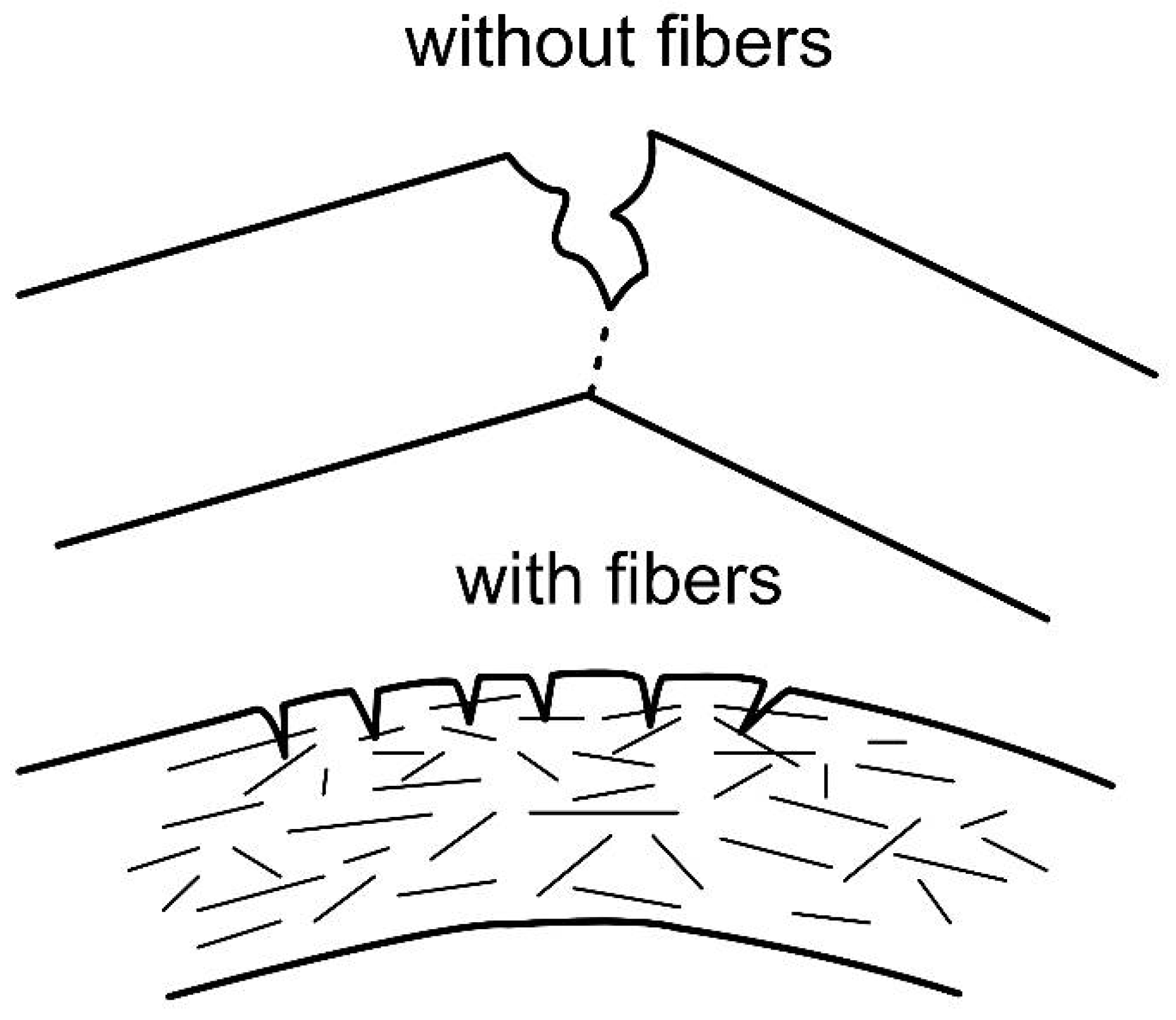

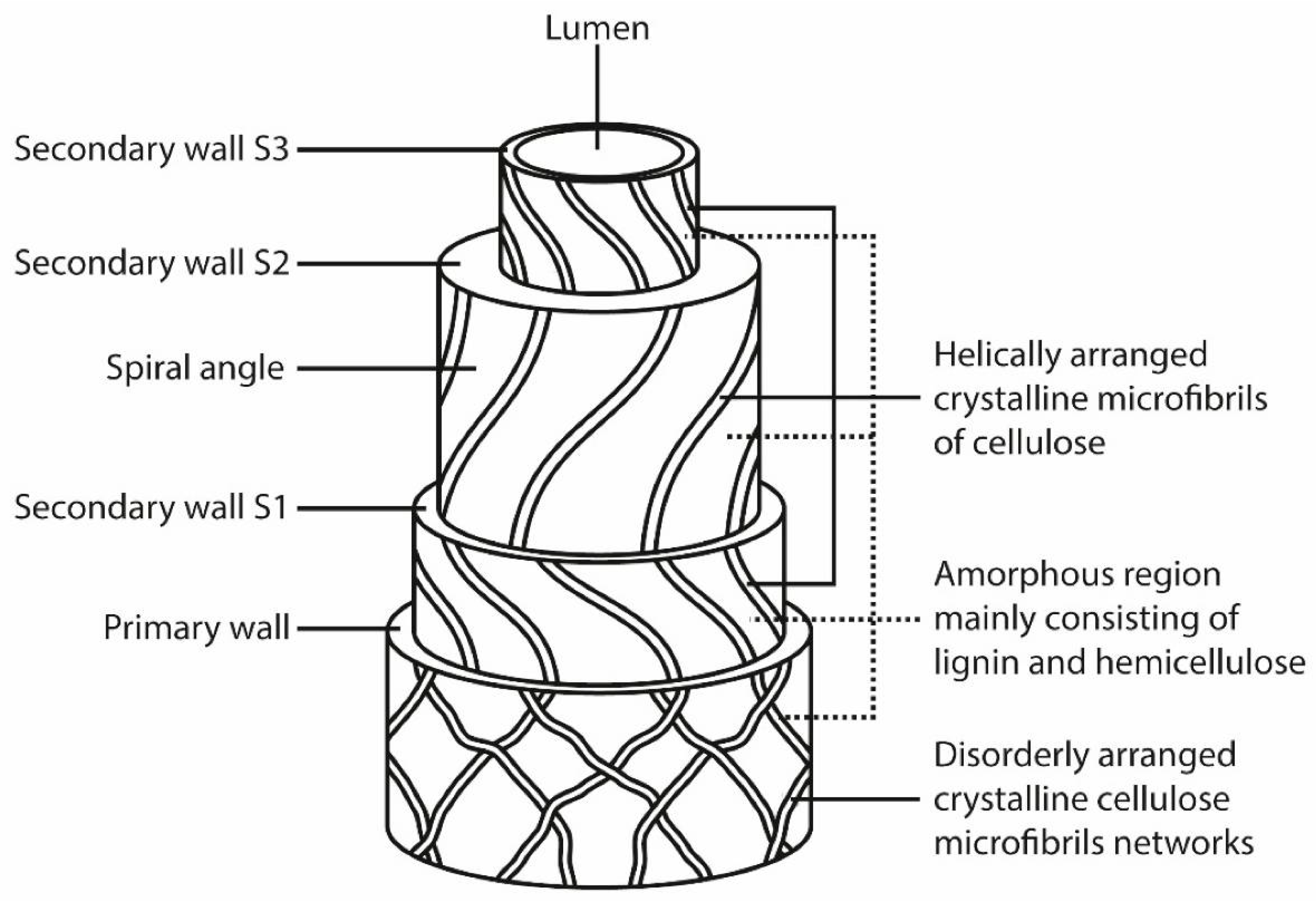
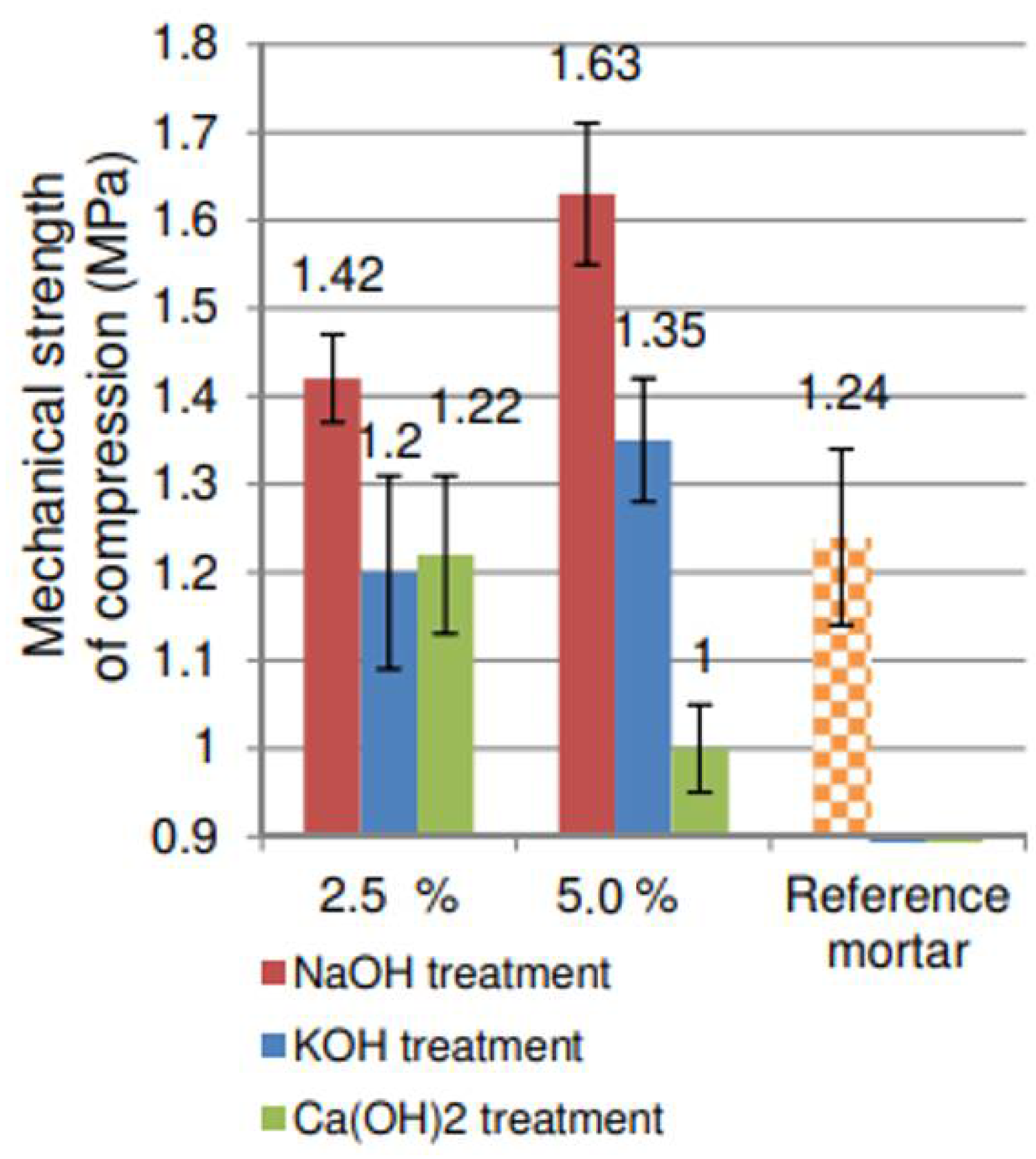
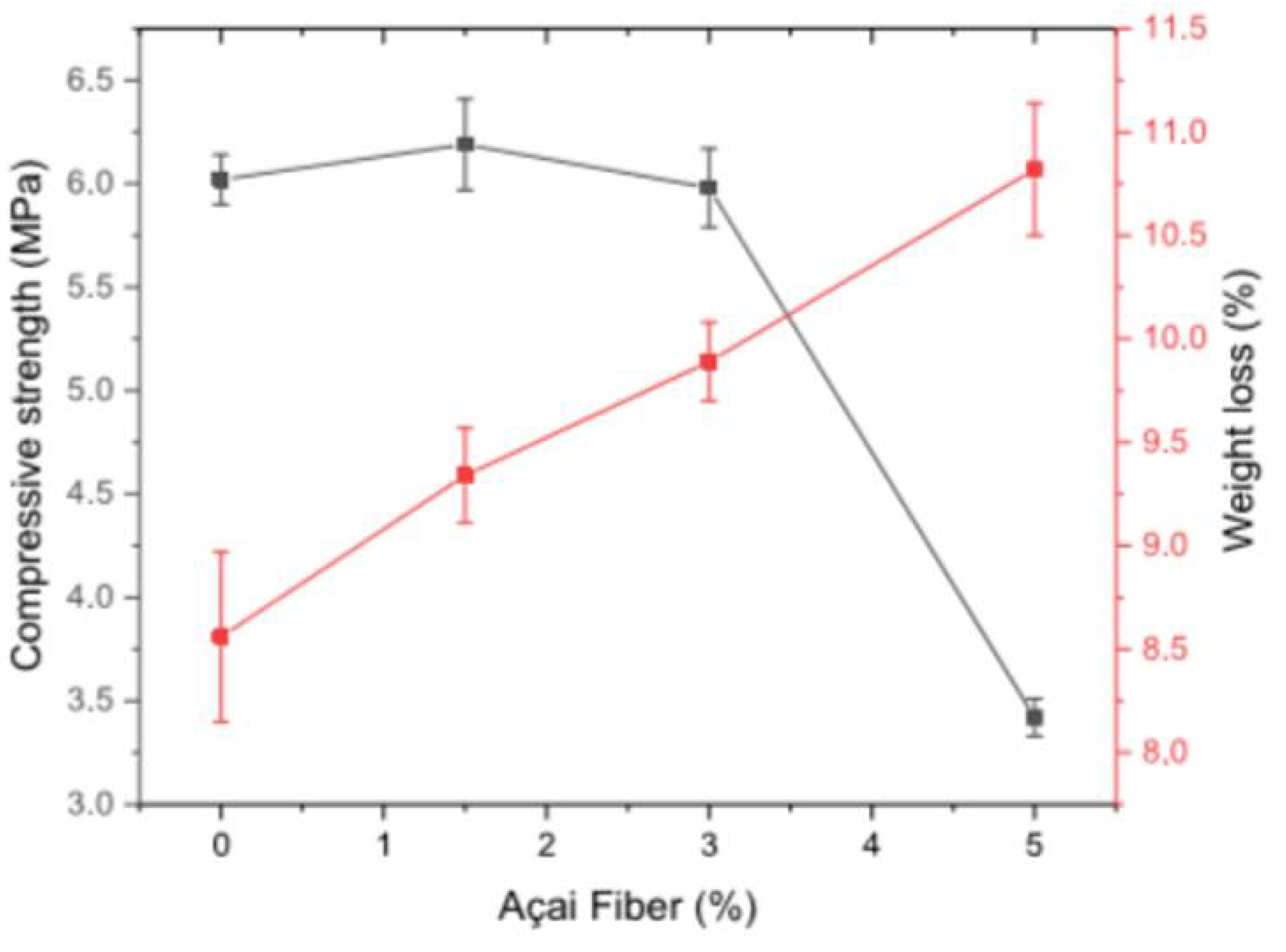

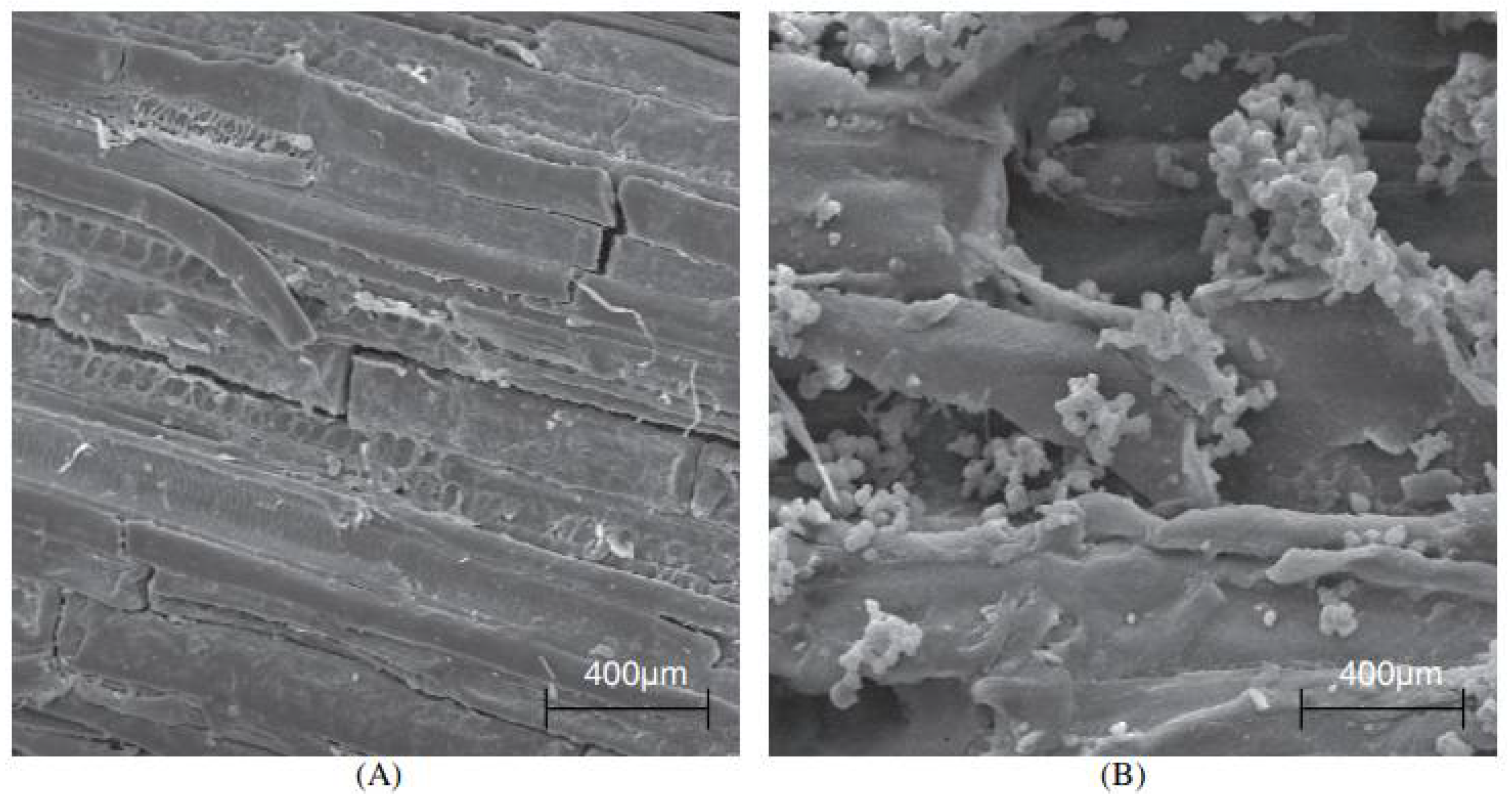
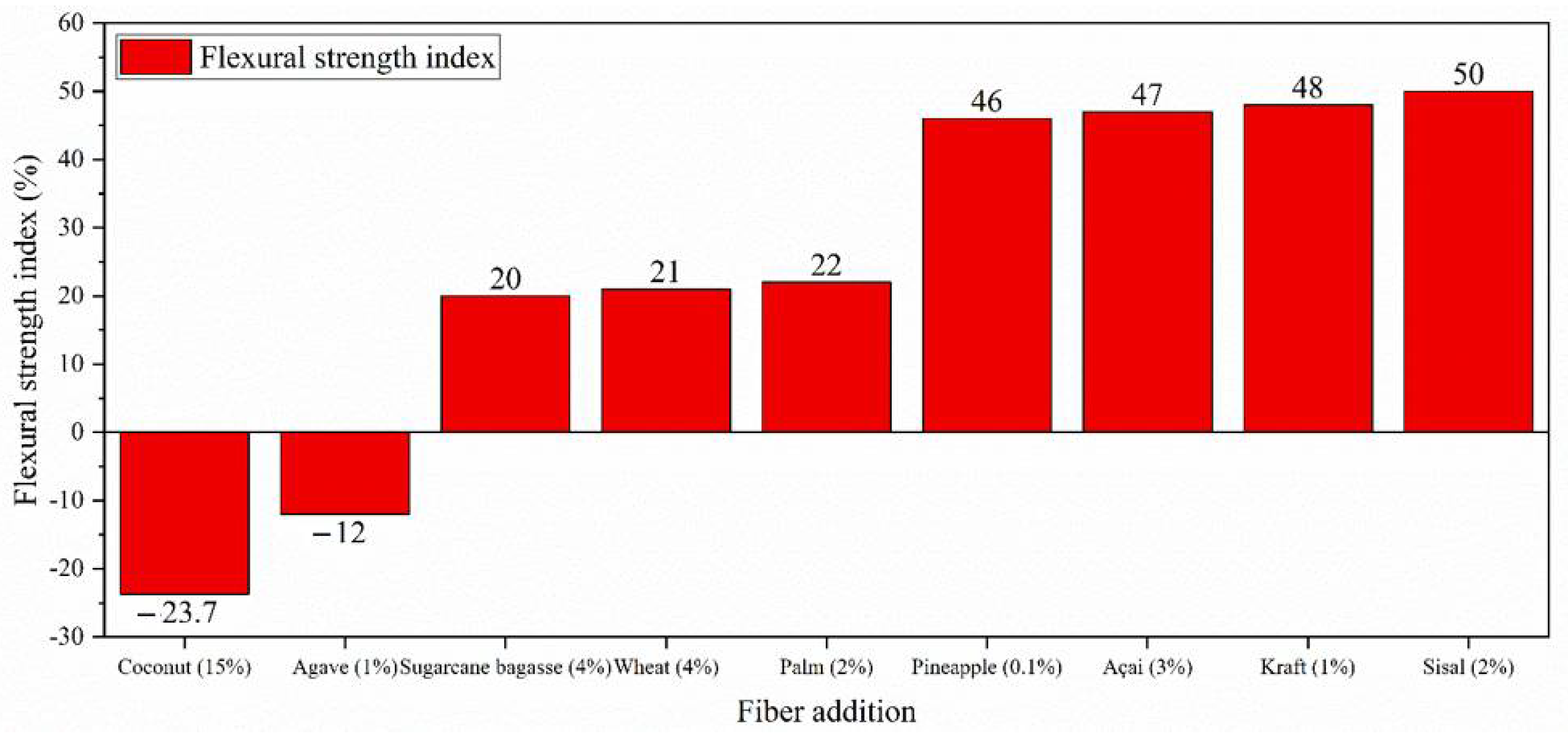
| Fiber | Cellulose (%) | Hemicellulose (%) | Lignin (%) |
|---|---|---|---|
| Cotton [30] | 82.7 | 5.7 | - |
| Pineapple [24] | 81.0 | - | 12.7 |
| Tucum Palm [31] | 78.9 | 1.4 | 17.4 |
| Hemp [30] | 74.4 | 17.9 | 3.7 |
| Bamboo [30] | 73.8 | 12.5 | 10.2 |
| Curaua [24] | 73.6 | 9.9 | 7.5 |
| Kenaf [24] | 72.0 | 20.3 | 9.0 |
| Coconut [32] | 68.9 | 16.8 | 32.1 |
| Ramie [30] | 68.6 | 13.1 | 0.6 |
| Sisal [30] | 65.8 | 12.0 | 9.9 |
| Jute [30] | 64.4 | 12.0 | 11.8 |
| Flax [30] | 64.1 | 16.7 | 2.0 |
| Sugarcane bagasse [24] | 55.2 | 16.8 | 25.3 |
| Piassava [31] | 53.2 | 1.71 | 45.7 |
| Açai [33] | 46.4 | 17.2 | 31.1 |
| Fiber | Tensile Strength (MPa) | Young’s Modulus (GPa) | Elongation at Break (%) | Density (g/cm3) |
|---|---|---|---|---|
| Kenaf [24] | 930.0 | 53.0 | 1.6 | - |
| Hemp [24] | 690.0 | 70.0 | 1.6 | 1.5 |
| Coconut [30] | 593.0 | 6.0 | 30.0 | 1.2 |
| Ramie [24] | 560.0 | 24.5 | 2.5 | 1.5 |
| Sisal [24] | 511.0–635.0 | 9.4–22.0 | 2.0–2.5 | 1.5 |
| Curaua [24] | 500.0–1150.0 | 11.8 | 3.7–4.3 | 1.4 |
| Pineapple [24] | 400.0–627.0 | 1.4 | 14.5 | 0.8–1.6 |
| Jute [24] | 393.0–773.0 | 26.5 | 1.5–1.8 | 1.3 |
| Flax [24] | 345.0–1035.0 | 27.6 | 2.7–3.2 | 1.5 |
| Sugarcane bagasse [24] | 290.0 | 17.0 | - | 1.3 |
| Cotton [56] | 287.0–597.0 | 5.5–12.6 | 3.0–10.0 | 1.5–1.6 |
| Bamboo [24] | 140.0–230.0 | 11.0–17.0 | - | 0.6–1.1 |
| Piassava [57] | 134.6–142.9 | 1.1–4.6 | 6.4–21.9 | 1.1 |
| Açai [33] | 17.8–20.4 | 15.7–18.6 | - | 1.4 |
| Fiber | Density (g/cm3) | Tensile Strength (GPa) | Specific Tensile Strength (σ/ρ) | Young’s Modulus (GPa) | Specific Elastic Modulus (E/ρ) |
|---|---|---|---|---|---|
| Steel Fiber [59] | 7,500,000 | 2.5 | 0.0000003 | 190.0–210.0 | 0.000025 |
| E-Glass [60] | 2.6 | 1.8–2.7 | 0.69–1.04 | 73.0 | 28.1 |
| Sugarcane bagasse [24] | 1.3 | 0.3 | 0.2 | 17.0 | 13.6 |
| Coconut [30] | 1.2 | 0.6 | 0.5 | 6.0 | 5.0 |
| Sisal [24] | 1.5 | 0.5–0.6 | 0.3–0.4 | 9.4–22.0 | 6.2–14.7 |
| Curaua [24] | 1.4 | 0.5–1.1 | 0.4–7.9 | 11.8 | 8.4 |
| Pineapple [24] | 400.0–627.0 | 0.6 | 0.38–0.75 | 1.4 | 0.9–1.8 |
| Jute [24] | 1.3 | 0.4–0.8 | 0.3–0.59 | 26.5 | 20.4 |
| Piassava [57] | 1.1 | 0.1 | 0.09 | 1.1–4.6 | 1.0–4.3 |
| Açai [33] | 1.4 | 0.02 | 0.014 | 15.7–18.6 | 11.2–13.3 |
| Fiber | Fiber Addition | Fiber Treatment | Matrix | Cure |
|---|---|---|---|---|
| Xerophyte (Diss and Doum) [1] | 0%, 0.5%, 1%, 1.5%, 2%, 3%, 4% | 1% and 3% NaOH for 30 min | Portland mortar | Submerged water |
| Flax [5] | 2% | Boiling water and coating with hydraulic binder | Portland mortar | 20 ± 2 °C and 50% RH |
| Pineapple [12] | 0%, 0.25%, 0.5% | 5% NaOH for 6 h | Alkali activated mortar | - |
| Sisal [20] | 3% | Natural | Portland mortar | Submerged water |
| Sisal [53] | 0%, 1%, 1.5%, 2% | 1% Na2CO3 for 7d | Portland concrete | - |
| Kraft [28] | 5% | Silica fume and and NaOH | Portland concrete | Curing bath |
| Piassava, tucum palm, razor grass, and jute [31] | 0%, 1.5%, 3.0%, 4.5% | Natural, 8% NaOH, hot water, hornfication and hybridization | Portland mortar | Submerged water and autoclave with CO2 |
| Açai [33] | 0%, 1.5%, 3%, 5% | Natural and 5% NaOH solution | Portland mortar | Air, 60% RH |
| Curauá [57] | 2% | Hot water | Portland mortar | Submerged water |
| Natural Fibers from Brazil | |||||||||||
|---|---|---|---|---|---|---|---|---|---|---|---|
| Sug. Bagasse—No Treatment [77] | Coconut— No Treatment [81] | Sisal— No Treatment [65] | Açai— 5% NaOH [33] | Pineapple— 5% NaOH [125] | Piassava— CO2 Water [31] | ||||||
| wt.% Fibers | RCI (%) | wt.% Fibers | RCI (%) | wt.% Fibers | RCI (%) | wt.% Fibers | RCI (%) | wt.% Fibers | RCI (%) | wt.% Fibers | RCI (%) |
| 0 | 100.0 | 0 | 100.0 | 0 | 100.0 | 0 | 100.0 | 0 | 100 | 0 | 100.0 |
| 5 | 104.7 | 0.2 | 125.0 | 0.6 | 100.8 | 1.5 | 109.1 | 0.05 | 111.8 | 1.5 | 109.2 |
| 10 | 111.6 | 0.4 | 100.0 | 1.2 | 103.3 | 3 | 120.2 | 0.1 | 118.2 | 3 | 98.1 |
| 15 | 120.9 | 0.6 | 100.0 | 1.8 | 99.2 | 4.5 | 111.9 | 0.15 | 111.8 | 4.5 | 109.4 |
| 20 | 97.7 | 0.8 | 115.0 | 0.2 | 108.8 | ||||||
Publisher’s Note: MDPI stays neutral with regard to jurisdictional claims in published maps and institutional affiliations. |
© 2022 by the authors. Licensee MDPI, Basel, Switzerland. This article is an open access article distributed under the terms and conditions of the Creative Commons Attribution (CC BY) license (https://creativecommons.org/licenses/by/4.0/).
Share and Cite
Lilargem Rocha, D.; Tambara Júnior, L.U.D.; Marvila, M.T.; Pereira, E.C.; Souza, D.; de Azevedo, A.R.G. A Review of the Use of Natural Fibers in Cement Composites: Concepts, Applications and Brazilian History. Polymers 2022, 14, 2043. https://doi.org/10.3390/polym14102043
Lilargem Rocha D, Tambara Júnior LUD, Marvila MT, Pereira EC, Souza D, de Azevedo ARG. A Review of the Use of Natural Fibers in Cement Composites: Concepts, Applications and Brazilian History. Polymers. 2022; 14(10):2043. https://doi.org/10.3390/polym14102043
Chicago/Turabian StyleLilargem Rocha, Diego, Luís Urbano Durlo Tambara Júnior, Markssuel Teixeira Marvila, Elaine Cristina Pereira, Djalma Souza, and Afonso Rangel Garcez de Azevedo. 2022. "A Review of the Use of Natural Fibers in Cement Composites: Concepts, Applications and Brazilian History" Polymers 14, no. 10: 2043. https://doi.org/10.3390/polym14102043
APA StyleLilargem Rocha, D., Tambara Júnior, L. U. D., Marvila, M. T., Pereira, E. C., Souza, D., & de Azevedo, A. R. G. (2022). A Review of the Use of Natural Fibers in Cement Composites: Concepts, Applications and Brazilian History. Polymers, 14(10), 2043. https://doi.org/10.3390/polym14102043








